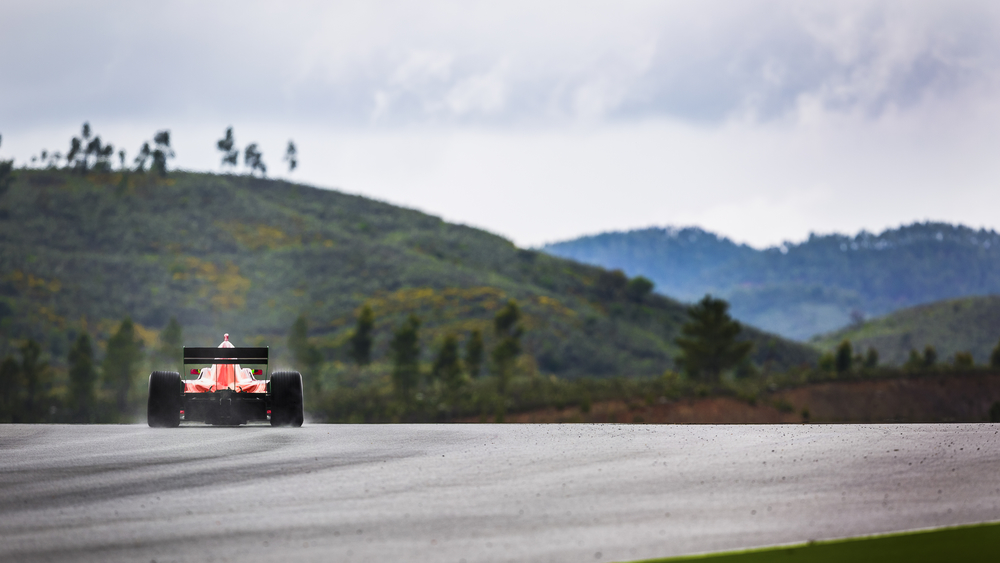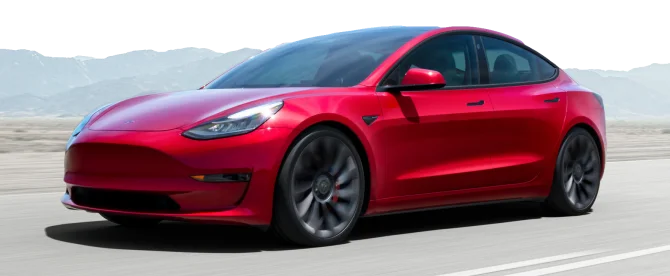¡Consigue esta oferta! Llama ahora.
Hable con un especialista en planes de protección de vehículos y obtenga $300 apagado cualquier nuevo contrato al instante.
Llamar 866-678-4172
o escanea el código a continuación


En sus mejores momentos, los deportes de motor han impulsado e inspirado innumerables momentos de gran innovación para todo el mundo del automóvil. Sin embargo, de vez en cuando aparecen coches de carreras que tienen la mala suerte de ir demasiado lejos demasiado pronto. Esto hace que estos vehículos de competición rompan las reglas con tanta frecuencia como baten récords.
Los siguientes 9 automóviles se encuentran entre las máquinas motorizadas más grandiosas jamás construidas. Lamentablemente, “volaron demasiado cerca del sol”, por así decirlo, y fueron prohibidos por ser demasiado rápidos y demasiado geniales para la escuela:
El legendario corredor británico Graham Hill se encontró una vez al volante de uno de los Lotus 56 4WD Turbine Cars de Andy Granatelli en el Indianapolis Motor Speedway. Lamentablemente, el Lotus 56 con motor de turbina nunca ganó la Indy 500; de hecho, se estrelló, pero recibió suficiente atención y fue lo suficientemente rápido como para prohibirlo después de su única aparición en 1968. El auto usaba un motor de turbina Pratt & Whitney y tracción en las cuatro ruedas para clasificarse en la pole y, de hecho, lideró la mayor parte de la carrera; fue una bomba de combustible defectuosa la que interrumpió la carrera a pocas vueltas de la meta. En respuesta, la tracción en las cuatro ruedas y las turbinas fueron rápidamente prohibidas en la pista.
Mark Neary Donohue, Jr., también conocido como “Captain Nice”, fue un piloto de carreras estadounidense conocido por su habilidad para configurar sus propios autos de carrera en solitario antes de conducirlos hacia las victorias. Como tal, se ganó una reputación de romper constantemente las reglas, cuando no hacer trampas directamente. El más notable fue su Penske Camaro Z/28, que tenía paneles de carrocería sumergidos en ácido para reducir el peso y una jaula de “seguridad” que le daba toneladas de rigidez. Ese auto es uno de los autos de carreras más notorios de todo el automovilismo. Tanto es así que cuando los organizadores de la Trans-Am se dieron cuenta de lo que estaba haciendo Donahue, prohibieron todos los vehículos llamados “Ligeros”, incluso después de que Donohue lograra inscribirlo disimuladamente al año siguiente, disfrazado como un modelo de 1968.
Otro coche que alguna vez condujo el "Capitán Niza", este demuestra que un coche de carreras es demasiado rápido para su propio bien. El Porsche 917/30 Can-Am utiliza un turbocargador del motor bóxer de 12 cilindros del 917 ganador de Le Mans para producir unos ridículos 1300 caballos de potencia, avergonzando en el proceso al equipo McLaren, que hasta entonces dominaba la competición. Los organizadores de Can-Am impusieron entonces un límite de combustible a los coches turbocargados para la temporada de 1974, por lo que los equipos Penske y Porsche se vieron obligados a retirarse de la carrera.
Este coche es un motor de seis cilindros en línea de la generación E46 de BMW M3 y es una obra maestra de la ingeniería. Lamentablemente, eso significó que no logró clasificarse para la American Le Mans Series (ALMS). BMW fue demasiado lejos y abandonó un V8 de 500 caballos para construir un pequeño puñado de coches de carretera para satisfacer los requisitos de homologación, con el fin de demoler a sus competidores por completo. Luego, la ALMS cambió el requisito de homologación a 100 coches de carretera en 2002, lo que obligó a BMW a retirar el poderoso GTR.
En la temporada de F1 de 1992, nadie pudo alcanzar a Nigel Williams debido al notable uso de un innovador sistema de suspensión activa en el coche. Lo que hace que este sistema sea único es que fue programado para anticipar los cambios de superficie en una pista de carreras, pero los equipos rivales se quejaron de que era demasiado costoso de desarrollar. La tecnología fue prohibida en 1993.
Este coche ha sido codiciado por los aficionados a los coches japoneses durante décadas y con razón. Utiliza un motor de seis cilindros en línea turboalimentado y un sistema de tracción total realmente genial. En los años 90, el R32 Skyline GT-R fue invicto en su reinado en los circuitos de turismo australianos. Sin embargo, el organismo rector de esa organización no compartió el entusiasmo y, por lo tanto, prohibió la turboalimentación y la tracción total, poniendo fin a la era del Skyline GT-R en Australia.
Los autos Aero de Mopar fueron considerados en su momento los innovadores más audaces de la NASCAR, y su aerodinámica era mucho más avanzada de lo que sus neumáticos podían soportar en ese momento. En los años 70, el Dodge Daytona y el Plymouth Superbird podían alcanzar fácilmente los 320 km/h, pero la NASCAR impuso un límite de potencia a los autos con alerones para 1971, bajo el supuesto de que los autos eran demasiado rápidos para la época. Poco después, los grandes alerones y los morros puntiagudos desaparecieron para siempre de la NASCAR.
Jim Hall era conocido por una flota de Chaparrals que eran algunos de los coches más inusuales que jamás hayan pisado una pista, pero también eran absolutamente brillantes. El 2J es nuestro favorito porque creemos que representa la cumbre de la locura metódica de Chaparral. Utiliza dos ventiladores accionados por un motor de soplador de nieve para "succionar" el coche hasta el suelo. La carga aerodinámica resultante era enorme incluso a velocidades "bajas". Aunque los problemas mecánicos impidieron que el coche ganara sus carreras, el sistema de carga aerodinámica fue prohibido antes de que pudiéramos ver la capacidad total de dicho sistema.
La leyenda de la F1, Gordon Murray, reinterpretó una vez la innovación del 2J para una sola carrera durante la temporada de 1978 con el Brabham BT46B. Conocido por tener un enorme ventilador que se activa desde la caja de cambios para succionar el auto hacia el suelo, al igual que el Chaparral, en realidad permite a los conductores tomar las curvas a prácticamente cualquier velocidad que quieran. Niki Lauda ganó el Gran Premio de Suecia, la primera carrera del BT46B, pero Lotus y otros equipos hicieron un berrinche, prohibieron y pusieron fin al breve reinado del "automóvil de vacío" en la Fórmula 1.

Estamos aquí para asegurarnos de que obtenga la protección EV más completa. Por eso nos hemos asociado con Xcelerate automático para ofrecerle una cobertura Tesla transparente y confiable.
¿Quiere que nos comuniquemos con usted acerca de la cobertura XCare para su Tesla?



¡Llama y obtén un descuento de $300 en cualquier plan nuevo!
Al hacer clic en el botón, acepta que Endurance utilice tecnología automatizada para llamarlo, enviarle un correo electrónico y enviarle mensajes de texto utilizando la información de contacto anterior, incluido su número de teléfono móvil, si se proporciona, con respecto a la protección del automóvil o, en California, el seguro contra averías mecánicas. También acepta el Endurance política de privacidad y Términos y condiciones. El consentimiento no es una condición de compra y puede retirar el consentimiento en cualquier momento. Se pueden aplicar tarifas por mensajes y datos.
Hable con un especialista en planes de protección de vehículos y obtenga $300 apagado cualquier nuevo contrato al instante.
Llamar 866-678-4172
o escanea el código a continuación



Simplemente complete la información a continuación y le daremos seguimiento rápidamente con su cotización gratuita y sin compromiso.
Al hacer clic en el botón, acepta que Endurance utilice tecnología automatizada para llamarlo, enviarle un correo electrónico y enviarle mensajes de texto utilizando la información de contacto anterior, incluido su número de teléfono móvil, si se proporciona, con respecto a la protección del automóvil o, en California, el seguro contra averías mecánicas. También acepta el Endurance política de privacidad y Términos y condiciones. El consentimiento no es una condición de compra y puede retirar el consentimiento en cualquier momento. Se pueden aplicar tarifas por mensajes y datos.

Para hablar con un especialista en planes de protección de vehículos y guardar $300
Escanee el código a continuación
Alex ha trabajado en la industria de servicios automotrices durante más de 20 años. Luego de graduarse de una de las mejores escuelas técnicas del país, se desempeñó como técnico logrando la certificación de Maestro Técnico. También tiene experiencia como asesor de servicios y gerente de servicios. Leer más sobre alex